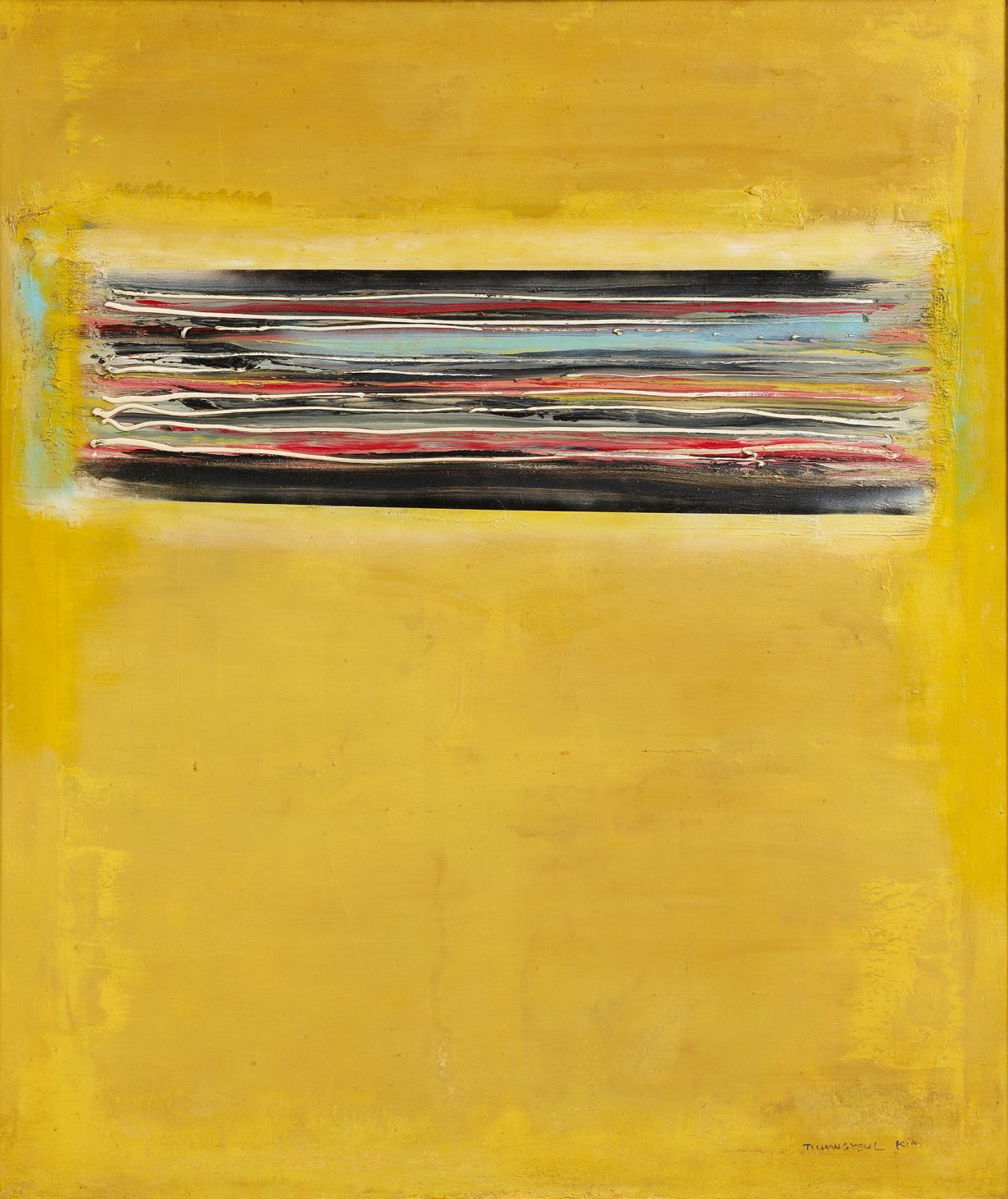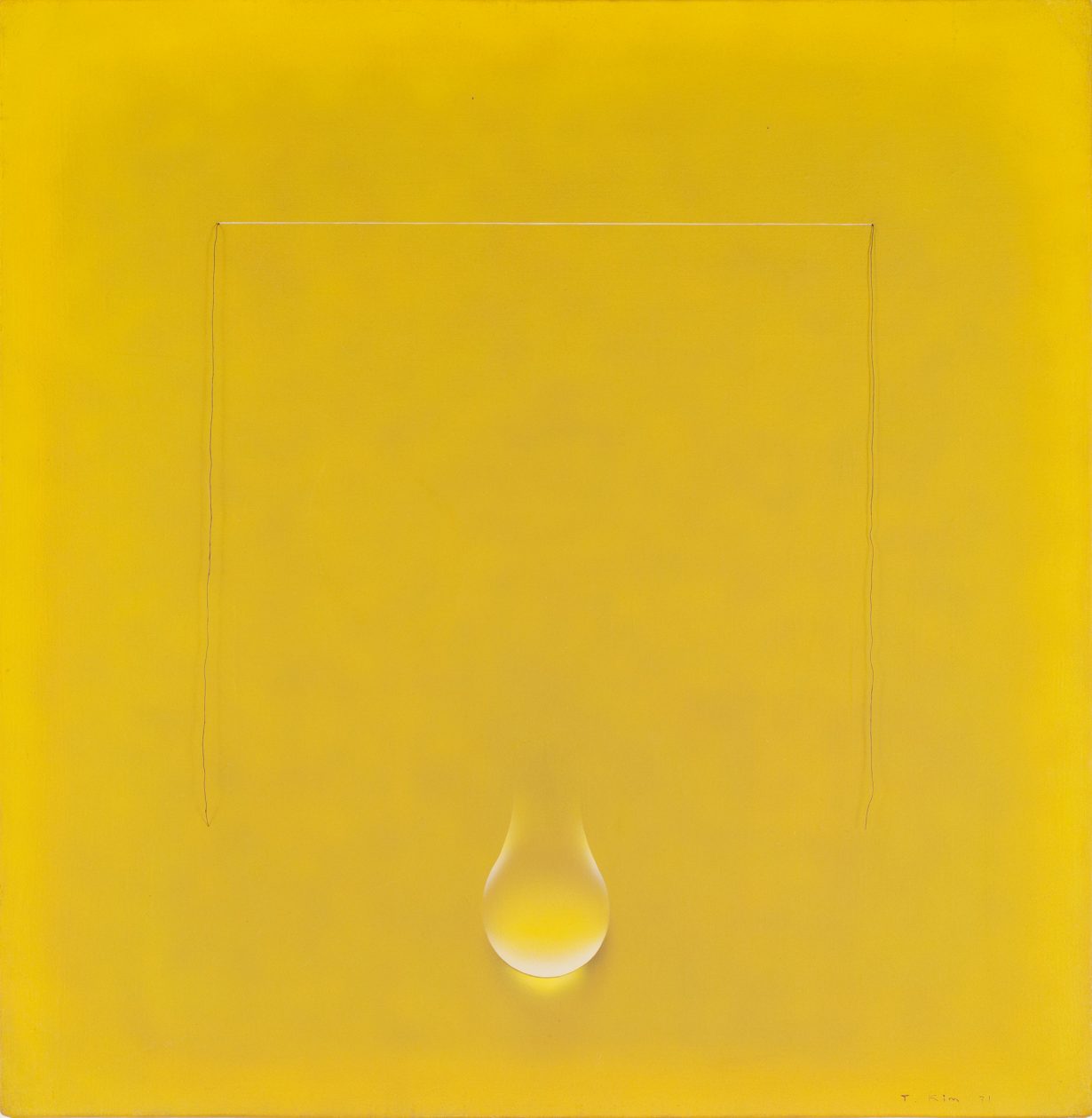Kim’s work – on view at MMCA Seoul – is a lifetime of survivor guilt funnelled through art

It’s easy to reduce the work of Kim Tschang-Yeul, who died in 2021, to the depiction of waterdrops; the pioneering Korean artist painted so many of these transparent, elliptic globules throughout his career that the association is inextricable. But this, the first largescale, posthumous retrospective of his work – a reprieve from the group shows in which his art is typically encountered – reveals these droplets to be part of a larger whole. This is a focused journey through his evolving artistic process.
Spread across three galleries, it begins, quite remarkably, with a canvas’s verso – laid bare in an open section of a wall. Works from Kim’s Informel period grace the space’s perimeter. These nonfigurative paintings, in the lineage of abstract, gestural works from the French movement of the same name, were a portal for Kim – ‘a ritual of mourning and remembrance’, explains the exhibition text. Snaking around the room, one finally lands on that same initial painting from the front: Rite (1967), a moody black void with streaks of dusty yellows and reds, glowing softly around impasto waves of beige acrylic paint. His other pieces in the Rite series are less severe, primarily interesting for their muddied colours and ability to guide one’s eye in vertical and horizontal stripes, but this work palpably broadcasts dread in its sense of stasis amidst movement. Next to it on the wall is a quote from Kim about the Korean War: ‘Sixty of my 120 middle school classmates were killed.’
The exhibition repeatedly points out that trauma defined a lot of Kim’s work, but as one heads downstairs, a collection that ostensibly avoids such reality awaits. He moved to New York in 1965, and the resulting pieces feature cold, geometric patterns that evolve towards multiple 1970 and 71 works from his minimalist Phenomenon and Procession series, rife with metallic oozing liquid. A cramped hall positions the era as merely transitional (the unceremonious placement of Kim’s untitled 1967 plexiglass sculpture, irregularly shaped and with muted rainbow-coloured waves, doesn’t help), but it’s remarkable to see how all these pieces lead to the eureka moment of his first Waterdrops paintings. These three works are on square, monochromatic canvases and each contains a lone, large drop of water. There are white and yellow iterations (both Waterdrops, 1971), and next to it is a similar piece in black titled L’événement de la nuit (1972). Compared to his Informel period, these paintings draw the eye to uncanny depictions of water, each drop a symbol for the tragedy he refused to confront head-on.

The gallery then opens into a bright room where waterdrops arrive in multiple configurations: like teardrops and rain, as hyperreal and utterly ordinary. The best in his Waterdrops series utilise different materials – sand, graphite, paper – to highlight the prismatic nature of water; the painted stains and droplets, left without an actual source (whether eyes, clouds or faucets), contain and conceal unknown histories.
This is why Kim’s introduction of calligraphic text on his canvases during the mid-1980s feels like overkill. His waterdrops are painted in neatly arranged patterns throughout his Recurrence series, dotted like garish ornaments atop words from the classic Cheonjamun poem (‘The Thousand Character Primer’); the drops are frustratingly stripped of their agency, and too grounded in something identifiable. More enthralling is when the text is less immediately legible, appearing as splotchy surfaces onto which the waterdrops, now glossier than ever, can simply exist. Better still is a Recurrence piece from 1990 that’s haunted by orange and black smears. Near the centre is the spectral suggestion of a waterdrop, only its partial border and refracted light painted on: absence as a potent sign of presence.
Kim’s work is a lifetime of survivor guilt funnelled through art, where painting water became a way to “[wash] away all the memories”, as he explains in L’homme qui peint des gouttes d’eau (The Man Who Paints Water Drops, 2021), a documentary also on display. In his creative refinement and expansion, he considered the waterdrop an infinite vessel: it’s painted on newspapers and calendars and a square brick, existing as surreal hallucinations and orderly meditations. But the sheer number of these paintings also reveals a deeply intense coping mechanism. Ultimately, these paintings are charming, illusionistic trifles, but that’s part of the point – they express everything and nothing, of a way for Kim to maintain a daily artistic practice. It’s obsession as escapism, as a way to keep living.
Kim Tschang-Yeul at National Museum of Modern and Contemporary Art, Seoul, through 21 December
From the Autumn 2025 issue of ArtReview Asia – get your copy.
Read next 13th Seoul Mediacity Biennale Review: Spiritual Science